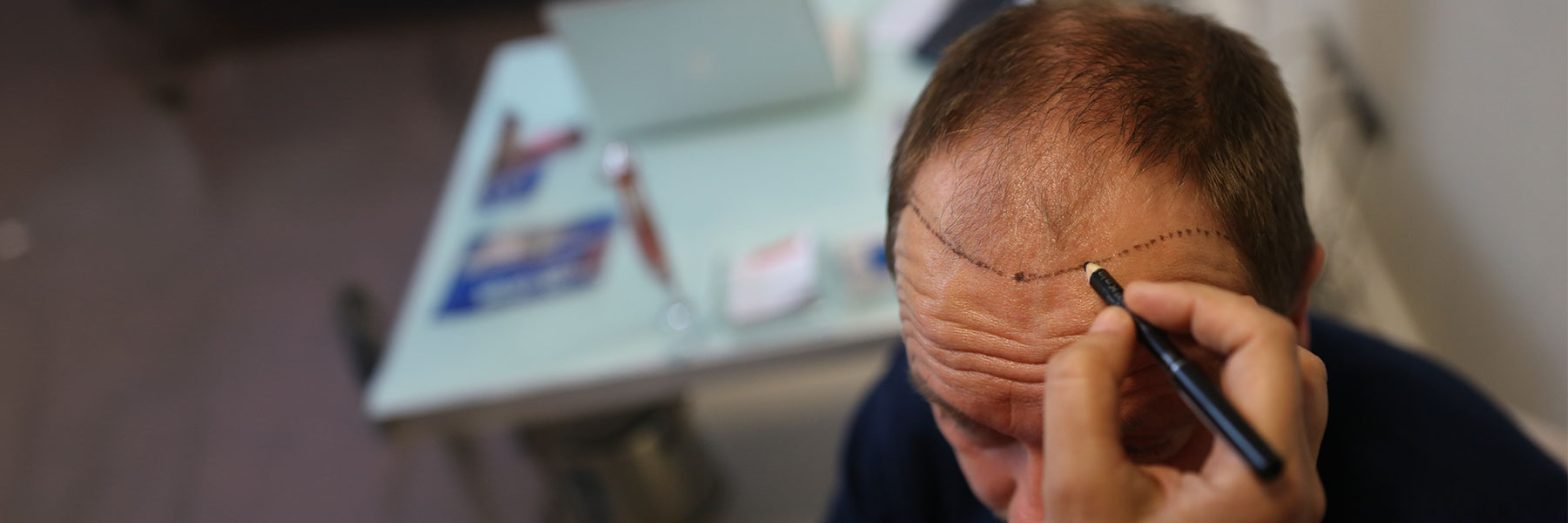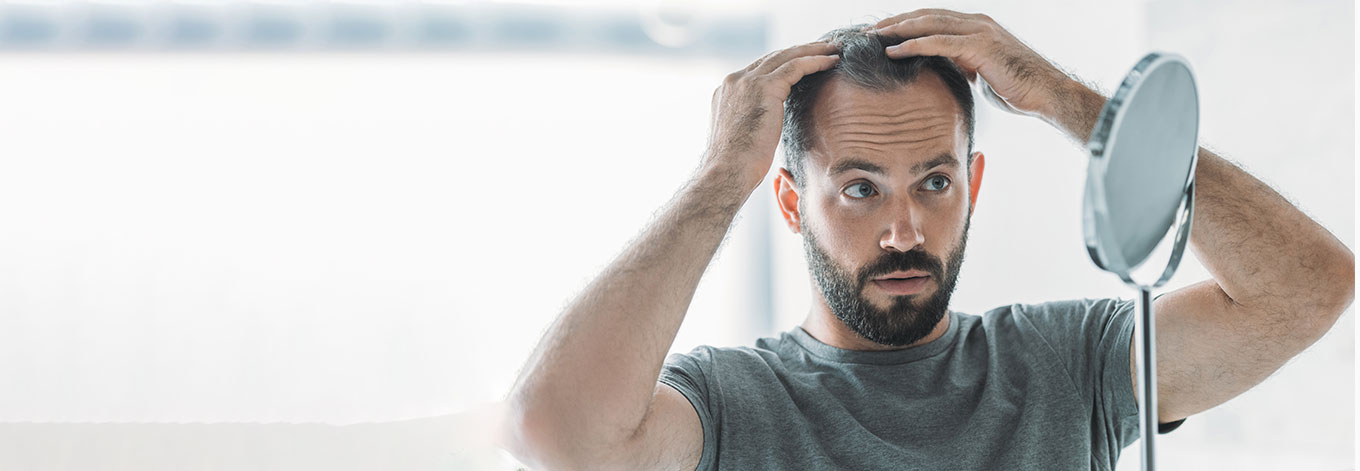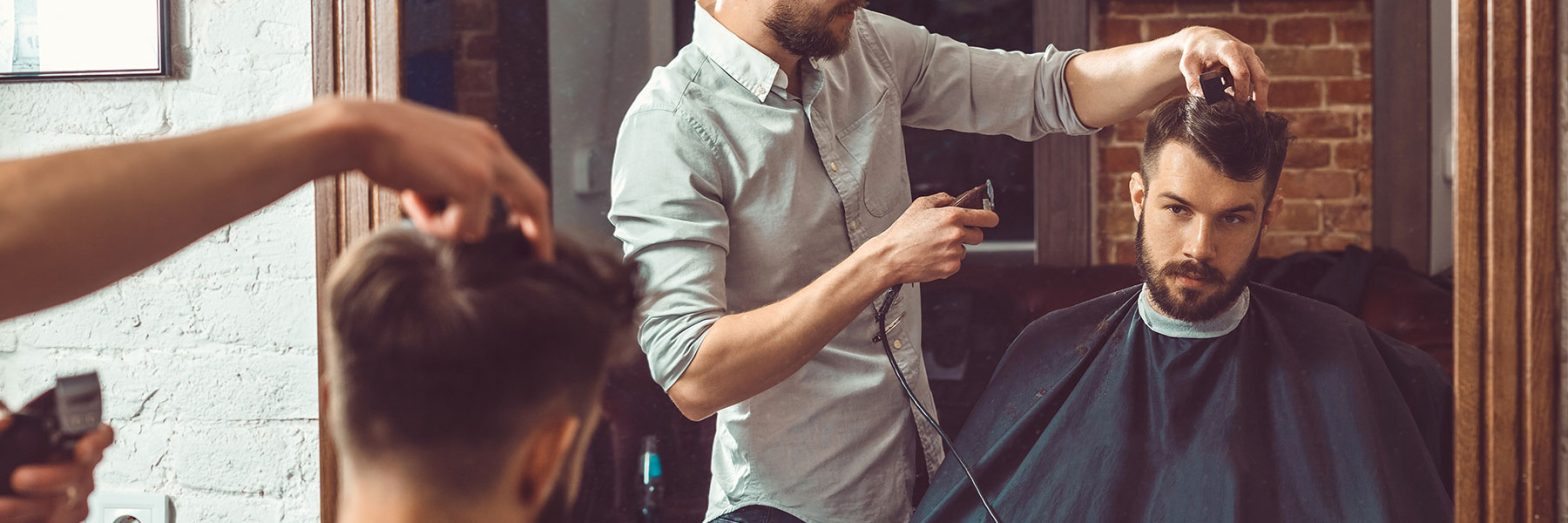The modern technique of hair restoration
HAIR LOSS & HAIR TRANSPLANTS
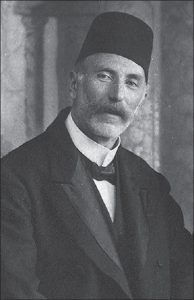
When you think of a hair transplant, you may have images of large strips of the scalp being removed before being dissected into individual grafts and placed into the area of baldness. This is known as Follicular Unit Transplantation (FUT) and is actually an old way of performing hair transplants now.
Follicular Unit Transplantations date back to the 19th century and they did not start to develop their procedures until 1897 when Dr. Menahem Hodara was able to successfully implant hair that was taken from unaffected areas of the scalp onto scars that were left bald by favus, a fungal infection of the scalp which led to scarring alopecia.
It wasn’t until the 1930s when more modern hair transplant techniques started to make an appearance with surgeons in Japan using smaller grafts to restore damaged areas of eyebrows and lashes but not baldness of the head.
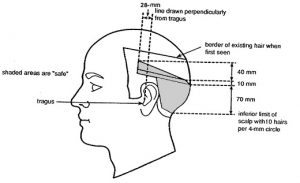
In the 1950s the modern technique of hair transplant finally started to take shape. New York dermatologist Norman Orentreich was experimenting with implanting free donor grafts to balding areas in patients showing signs of male pattern baldness. The theory was then advanced by Walter P. Unger, M.D who came up with the “Safe Donor Zone” system. This ensured that surgeons were focused on picking the most permanent hair follicles to be used as transplanted hair only grows in its new site for as long as it would have in its original one. This is a fundamental parameter still used today by surgeons performing a modern FUE Hair Transplant.
The first FUE was reported to have taken place in 1988 with Masumi Inaba in Japan and then went on to be conducted on public patients by Dr Ray Woods a year later in Australia. However FUE Hair Transplants were not described in medical literature until 2007.
So bringing it back to 2017 where are we now with hair transplants?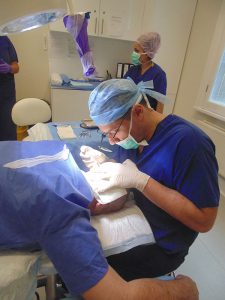
The amount of surgeons and practices that offer FUE Hair Transplants is still fairly limited with few surgeons mastering the technique due to the procedure taking a considerable amount of time and expense for surgeons to fully learn and develop skills to a high standard.
Luckily for you, The Private Clinic has a team of some of the most esteemed, reputable and sought after Hair Restoration specialists in the world who have all perfected their hair transplant techniques to be able to offer you natural looking, densely packed hair by selecting only the healthiest follicles and implanting them in the direction your hair grows.
There are tonnes of benefits for choosing a FUE Hair Transplant technique over the older FUT procedure including;
- No cuts or stitches
- Quicker recovery time
- No linear scar
- Less pain & discomfort in the donor area
- Donor area will return to normal after hair growth
- Natural results
- Unshaven FUE option available
Why not find out if you are suitable for a FUE Hair Transplant by booking in for a consultation with one of our surgeons or patient advisors where they will be able to set out an individual treatment plan as well as go into more detail about the procedure itself and the pre and post procedure advice.
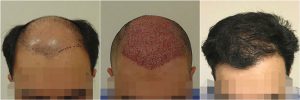
The Private Clinic
Our specialist hair transplant surgeons – Dr. Raghu Reddy and Dr Luca De Fazio in London Harley Street , Dr. Mark Tam in Leeds and Bristol, Dr. Michael Mouzakis in Birmingham, Manchester, Bristol, Leeds and Northampton and Mr Doraisami Mohan in Birmingham and Leeds offer the most advanced, minimally invasive Hair Transplant techniques available today





